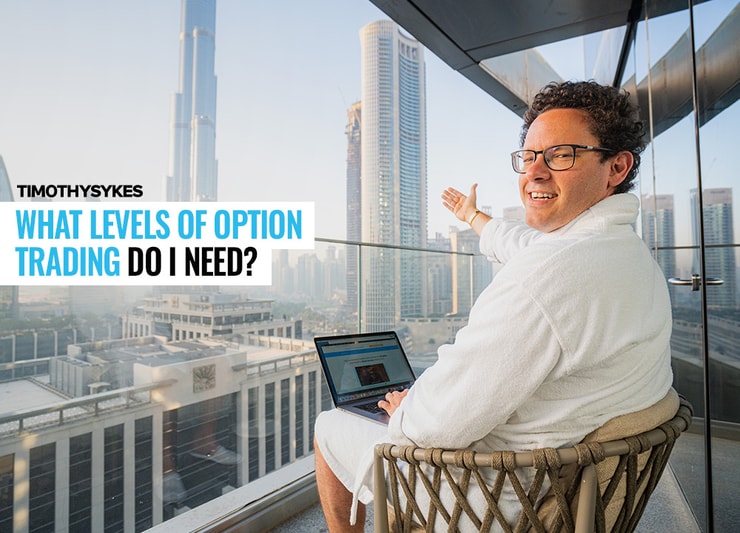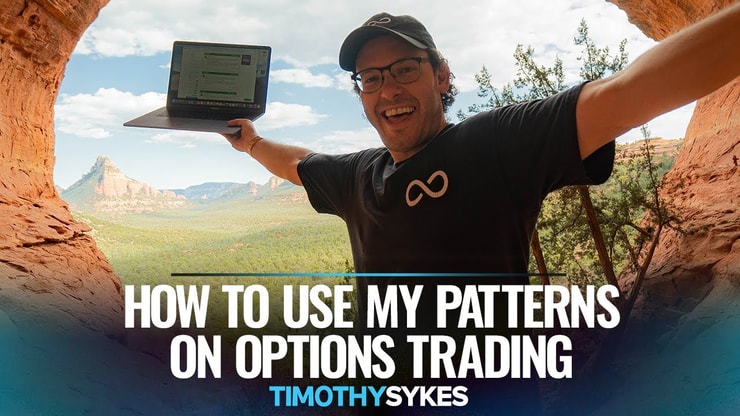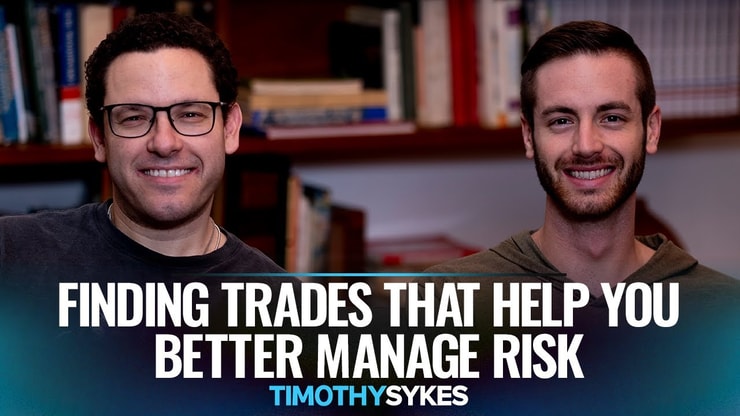Understanding the different levels of options trading is essential for anyone looking to navigate the complexities of the options market. Before you can begin trading options, brokers require you to obtain approval, which is based on your trading experience, financial situation, and understanding of the risks involved. This approval process categorizes traders into different levels, each permitting specific types of options strategies.
Read this article to learn the impact of the various options approval levels, helping you navigate your options trading rights with confidence and precision.
I’ll answer the following questions:
- What is options trading?
- How do options approval levels affect your trading capabilities?
- What are the different levels of options trading?
- How do you get approved for options trading?
- What factors influence your options approval level?
- How can you move up to a higher options trading level?
- What are the risks associated with different options trading levels?
- What should you do if you disagree with your assigned options approval level?
Let’s get to the content!
Table of Contents
What Is Options Trading?
Options trading involves contracts that give you the right, but not the obligation, to buy or sell a stock at a predetermined price within a specific time frame. Unlike regular stock trading, where you buy or sell shares directly, options allow for strategic plays on price movements, volatility, and time decay.
Given the complexity of these instruments, it’s crucial to fully understand the potential risks and rewards. Options can both amplify gains and expose traders to significant losses. This makes a solid grasp of the underlying mechanics and market behavior essential for success.
I don’t trade options — I leave it to pros like tech entrepreneur and trader Ben Sturgill. His smart-money webinars are the product of more than 2 decades of experience in the market and a unique technology, and they’re well worth checking out.
Check out the webinar here to see why Ben’s smart-money scanner has been going haywire lately!
How to Get Options Trading Approval
Before you start trading options, you need approval from your brokerage. The approval process typically requires filling out an application that assesses your trading experience, financial situation, and understanding of the risks. Brokers use this information to assign you to an appropriate trading level, which dictates the types of options strategies you’re permitted to execute.
This is not just a formality; it’s a safeguard to ensure that traders engage in strategies aligned with their knowledge and risk tolerance.
What Are Options Trading Levels?
Options trading levels determine the types of trades you can execute within your brokerage account. These levels range from basic covered positions to more advanced strategies involving naked options. Each level carries different risks and requires a different set of skills and knowledge. The higher your level, the more complex and potentially risky the strategies you can employ. Over the years, I’ve seen traders struggle by trying to jump into advanced strategies without fully understanding the basics, leading to avoidable losses.
For traders looking to enhance their strategies, incorporating a weekly pivot point trading strategy alongside your options trading can provide additional clarity on market trends. Weekly pivot points are crucial in identifying potential support and resistance levels, which can be invaluable when deciding on entry and exit points for your options trades. By combining pivot points with your understanding of options trading levels, you can make more informed decisions that align with your risk tolerance and trading objectives. For a detailed guide on this approach, explore the weekly pivot point trading strategy.
Here’s a breakdown of the various levels:
Level 1: Covered Positions
Engaging in Level 1 trading allows you to trade covered positions, where you own the underlying stock and sell options against it. The advantages and limitations include:
- Advantages:
- Lower risk compared to other options strategies.
- Generates income through premiums while holding the stock.
- Simple to understand and execute for beginners.
- Limitations:
- Limited profit potential.
- Requires ownership of the underlying stock, which ties up capital.
- Exposure to downside risk if the stock price falls significantly.
Level 2: Long Options
Level 2 trading involves buying options, which can lead to significant rewards but also carries higher risks. Key points to consider include:
- Risks:
- Entire premium paid for the options can be lost if the trade doesn’t work out.
- Requires precise timing to benefit from market movements.
- Potential Rewards:
- Unlimited profit potential on long calls if the stock price soars.
- Lower initial investment compared to buying the stock outright.
- Ability to leverage small price movements for larger gains.
More Breaking News
- Faraday Future’s New AI Initiatives: A Driving Force?
- RXRX Stock Takes a Dip: Is It Time to Buy?
- Aurora Stock Soars: Worth the Investment?
Level 3: Option Spreads
At Level 3, you can engage in spread strategies, which involve buying and selling options simultaneously to limit risk. Understanding these strategies is crucial because they can reduce risk while offering decent returns. Spread strategies require a deep understanding of market behavior and the interplay between different options.
Over time, mastering these techniques can provide a more controlled approach to options trading, but they require experience and a solid grasp of market dynamics.
Level 4: Uncovered Calls and Puts (Naked Options)
Uncovered calls and puts, known as naked options, are the most advanced and risky strategies. These involve selling options without holding the underlying stock, exposing you to theoretically unlimited risk. If the market moves against you, the losses can be catastrophic. I’ve seen experienced traders wiped out because they underestimated the risks of naked options.
How to Know What Level You Are in Currently
To find out your current options trading level, log into your brokerage account and navigate to the section where your account information is displayed. Brokers usually list your trading level, along with the specific types of options trades you are approved to execute. If you can’t find this information, contact your broker directly.
Knowing your level is crucial because it dictates the strategies you can use and helps you avoid accidentally executing trades you’re not approved for, which could lead to rejected orders or even account restrictions.
How to Move Up an Options Trading Level
To move up an options trading level, you must demonstrate that you’re ready for the increased risks associated with more advanced strategies. Brokers evaluate several factors before approving you for a higher level. These include your trading experience, financial situation, and understanding of the options market. For instance, your current brokerage accounts’ activity and performance play a significant role in whether you’re granted higher options approval levels. Most brokerages require investors to show that they have a solid understanding of the risks and the capacity to manage them.
Financial stability is another key factor. Brokers often look at your account balances, including cash reserves and margin availability, to ensure you can handle potential losses. They’ll also assess your investment objectives and overall portfolio to make sure that advanced options strategies align with your broader financial goals.
Don’t pass go, don’t collect $200, unless you have the following…
Trading Experience
Advancing to a higher options trading level often requires demonstrating a solid track record. Examples of trading experience metrics include:
- Number of years trading stocks and options.
- Frequency of trades per month.
- Types of trades executed successfully.
- Profitability over a sustained period.
Financial Requirements
Brokers may ask for financial documentation to assess your ability to handle the risks of higher-level options trading. Examples include:
- Recent account statements showing net worth.
- Proof of income, such as pay stubs or tax returns.
- Details of your current investment portfolio.
Knowledge and Understanding
To move up, you may need to demonstrate your knowledge of options trading, either through educational achievements or passing specific tests. Examples include:
- Completion of advanced options trading courses.
- Passing a broker’s internal options knowledge test.
- Obtaining a certification like the Series 7 or Series 56.
Risk Tolerance and Trading Objectives
Your risk tolerance and trading objectives must align with the higher trading levels you seek. If your objectives are aggressive and you’re willing to take on more risk, higher levels might be appropriate.
However, it’s essential to honestly assess your tolerance for potential losses. Traders often underestimate how they’ll react to significant losses, leading to poor decisions under stress. Your trading objectives should be clear and align with your overall financial goals, ensuring that any strategies you employ support these aims.
Past Trading Performance
Your past trading performance plays a significant role in level advancement. Consistently profitable trading can demonstrate to your broker that you’re ready for more complex strategies. However, erratic or poor performance might lead them to limit your level until you can prove a more consistent track record. Brokers look for a history of disciplined, informed trading before granting access to riskier options strategies.
Understanding high-volume scenarios with little to no price movement is essential when trying to advance your options trading level. These situations often indicate significant market interest without immediate price action, which can precede a major move. Recognizing these patterns allows traders to position themselves advantageously, especially when combined with advanced options strategies. By mastering the analysis of high-volume, no-price movement scenarios, you can strengthen your case for moving up to a higher trading level. To deepen your understanding of these market dynamics, learn more about high-volume no-price movement scenarios.
Professional Recommendations
Recommendations from financial professionals, such as financial advisors or certified investment planners, can support your case for advancing to a higher trading level. These professionals can vouch for your understanding of the risks and your readiness to handle more complex strategies, potentially speeding up the approval process.
Regular Review and Updating of Credentials
Regularly updating your trading credentials and knowledge is essential for maintaining and advancing your options trading level. Markets evolve, and so should your understanding of them. Keep learning, whether through formal education, online courses, or practical trading experience. Periodic reviews of your trading performance and objectives can help you stay on track and ensure that your trading level remains appropriate for your current skills and goals.
What Can I Do if I Disagree with My Assigned Options Approval Level?
If you disagree with your assigned options approval level, the first step is to contact your broker and discuss your concerns. Provide any additional documentation or evidence that supports your case for a higher level, such as improved financials or a better trading track record.
If the broker remains firm on their decision, consider taking additional steps to enhance your qualifications, such as completing an advanced trading course or gaining more trading experience. Remember, the goal of these levels is to protect you from taking on risks that exceed your current capability.
Key Takeaways
- Options trading levels are designed to match traders with strategies that fit their experience and risk tolerance.
- Advancing to higher levels requires a combination of experience, financial stability, and proven knowledge.
- Regularly updating your knowledge and reviewing your trading performance is crucial for maintaining your trading level.
- If you disagree with your level, there are steps you can take to potentially move up, but patience and persistence are key.
Trading isn’t rocket science. It’s a skill you build and work on like any other. Trading has changed my life, and I think this way of life should be open to more people…
I’ve built my Trading Challenge to pass on the things I had to learn for myself. It’s the kind of community that I wish I had when I was starting out.
We don’t accept everyone. If you’re up for the challenge — I want to hear from you.
Apply to the Trading Challenge here.
Trading is a battlefield. The more knowledge you have, the better prepared you’ll be.
Are options part of your trading toolkit? Write “I’ll keep it simple Tim!” in the comments if you picked up on my trading philosophy!
Frequently Asked Questions
Can I Start Trading Options with No Experience?
Technically, yes, but you’ll likely be limited to Level 1 options trading, which involves covered positions. This is the most straightforward and least risky form of options trading, suitable for beginners. However, diving into options without any experience in stock trading or a solid understanding of market dynamics is not advisable. It’s better to build up your knowledge and experience before moving on to more complex strategies.
Can My Options Approval Level Be Downgraded?
Yes, your options approval level can be downgraded if your broker determines that your trading activity or financial situation no longer supports the higher level. This might happen if you consistently incur losses, or if there are significant changes in your financial situation that increase your risk profile. Brokers are responsible for ensuring that traders are not engaging in strategies beyond their capabilities.
Is It Possible to Trade All Options Strategies at the Highest Approval Level?
At the highest approval level, you can trade almost all options strategies, including the most complex and risky ones like naked calls and puts. However, just because you can trade these strategies doesn’t mean you should. It’s essential to fully understand the risks and ensure they align with your overall trading objectives and risk tolerance before proceeding.
Can a Trading Platform Automatically Assign Options Contracts if I Don’t Close Them Before Expiration?
Yes, most trading platforms will automatically process the assignment of options contracts if they expire in-the-money, meaning the security’s price is favorable for exercising the option. It’s essential to monitor the prices of your securities closely as expiration approaches to avoid any unintended assignments that could significantly impact your portfolio.











Leave a reply